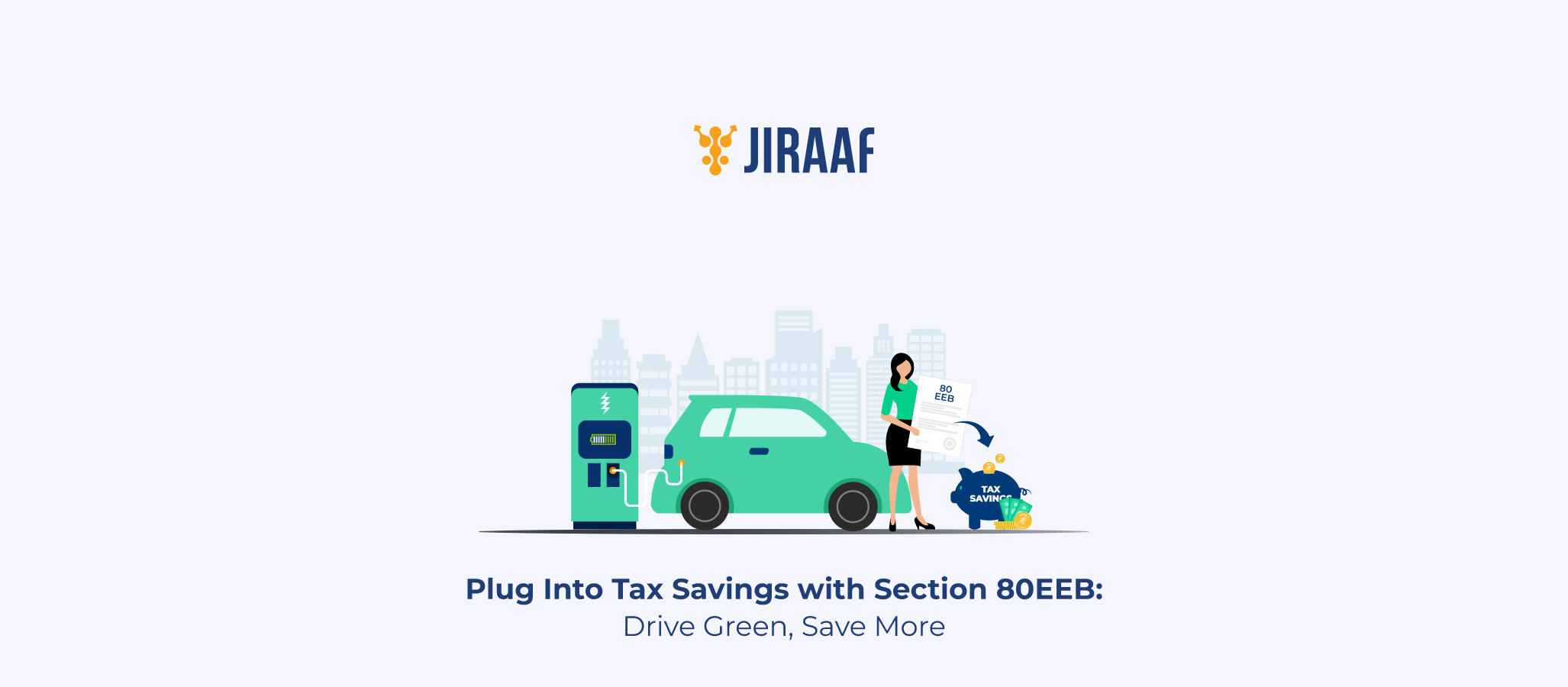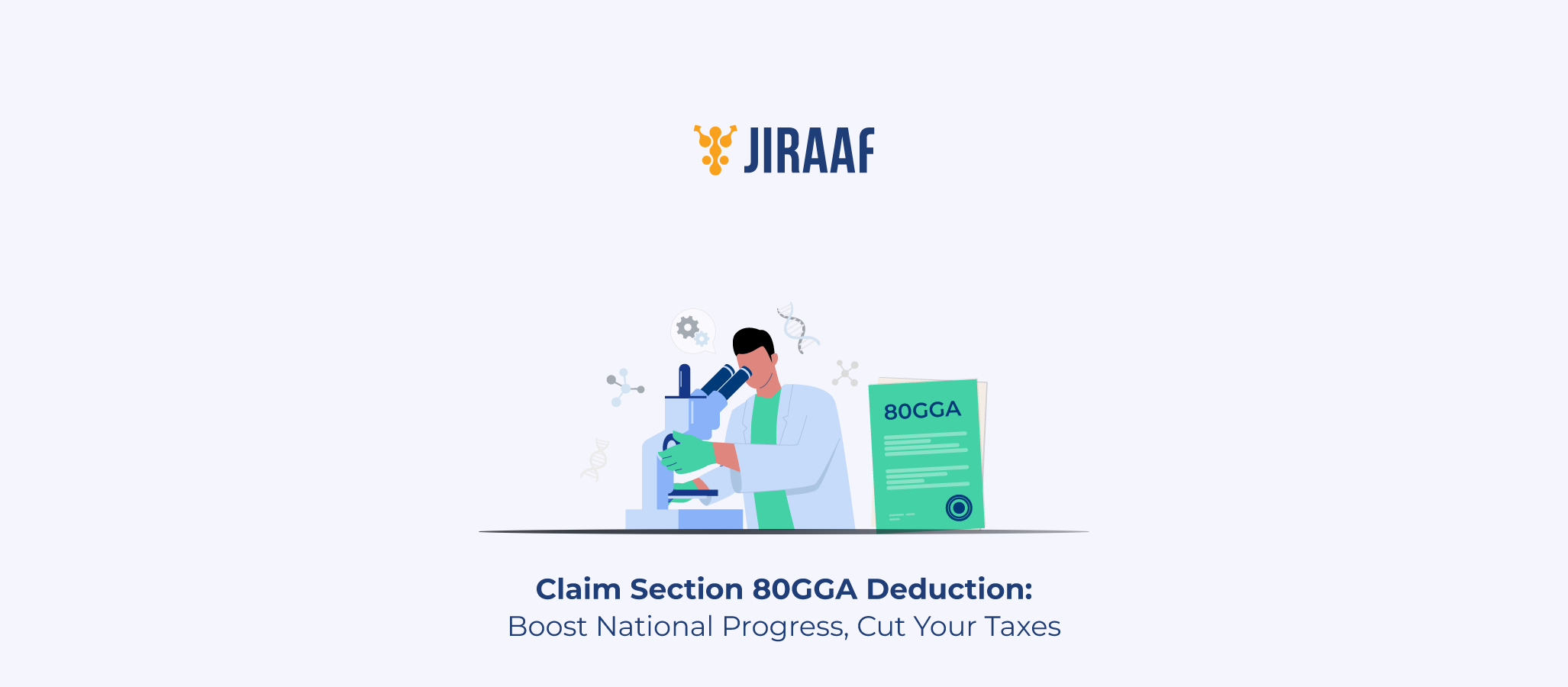Electric vehicles (EVs) aren’t just the future—they’re quickly becoming the present of transport. With increasing fuel prices and growing environmental concerns, buying an EV is more than a trendy decision—it’s a smart one, both for your pocket and the environment.
And to encourage this smart decision and promote the shift to electric modes of transport, the government introduced Section 80EEB under the Income Tax Act, allowing you to claim a tax deduction on the interest paid for an electric vehicle loan.
So, if you’re planning to purchase your first electric vehicle (or already have), here’s how you can use Section 80EEB to your advantage and potentially save up to ₹1.5 lakh in taxes each year. Ready to explore the benefits for yourself? Let’s get started.
What Is Section 80EEB of the Income Tax Act?
Section 80EEB is a relatively new tax provision introduced in the Union Budget 2019. It offers a deduction on the interest paid on loans taken for the purchase of electric vehicles—be it a car, bike, or scooter.
Here’s what makes Section 80EEB noteworthy:
- It’s exclusively for individual taxpayers
- The deduction is only on interest, not the principal
- It’s designed to promote eco-friendly transportation by offering financial incentives.
The best part? You don’t need to own a business or use your EV commercially; this deduction is meant for everyday individuals making an eco-conscious choice.
Who Can Claim the 80EEB Deduction?
Not everyone qualifies for this deduction, and the rules are fairly specific. Here’s a breakdown of the eligibility:
- You must be an individual taxpayer (not HUFs or companies)
- The loan must be taken from a financial institution or NBFC (non-banking financial company)
- The loan must have been sanctioned between April 1, 2019, and March 31, 2023
- The vehicle should be an electric vehicle as defined under the Central Motor Vehicles Rules.
- The EV should be used exclusively for personal use—if it’s for business, other rules may apply.
If you meet all these criteria, you’re set to enjoy some solid tax savings.
How Much Can You Deduct Under Section 80EEB?
Under Section 80EEB, you can claim a maximum deduction of ₹1,50,000 per financial year on the interest paid on your electric vehicle loan. Keep in mind that this applies only to interest; you can’t claim any deduction on the principal amount of the loan.
Key Notes
- This deduction is available over multiple years until the loan is repaid or until interest payments stop, whichever comes first.
- It’s available over and above the usual 80C and 80D deductions, making it great for maximizing total tax benefits.
Documents Required to Claim 80EEB
You’ll need a few essential documents to claim the deduction smoothly:
- Loan sanction letter from the financial institution or NBFC
- Interest certificate clearly stating the amount of interest paid during the financial year
- Invoice of the electric vehicle, proving it’s a qualified EV
- Bank statements (optional but useful) showing EMI payments
Keeping these ready during tax filing will save you a lot of last-minute hassle.
How to Claim Section 80EEB Deduction in Your ITR
Claiming 80EEB is a simple process—here’s how to do it right.
Step-by-Step Process
- Log in to the Income Tax Portal: https://www.incometax.gov.in
- Choose the applicable assessment year (AY 2026-27) while filing for FY 2025-26.
- Select the appropriate ITR form (usually ITR-1 or ITR-2) based on your income source.
- Go to the section “Deductions under Chapter VI-A”.
- Enter the amount under Section 80EEB.
- Upload supporting documents, if prompted.
- Double-check the interest amount, preview the return, and submit.
Pro Tip: Keep a digital and printed copy of all loan-related documents for five years in case of a future audit or query.
Section 80EEB vs. 80EE vs. 80EEA
Now, here’s a common confusion: People often mix up Section 80EEB with 80EE or 80EEA. Let’s break down the differences of each of these side-by-side.
| Feature | Section 80EE | Section 80EEA | Section 80EEB |
| Type of Loan | Home loan | Affordable home loan | Electric vehicle loan |
| Max Deduction | ₹50,000 | ₹1,50,000 | ₹1,50,000 |
| Eligibility | First-time homebuyers | First-time affordable housing buyers | Individual EV buyers |
| Timeframe | Loan sanctioned before Mar 31, 2017 | Loan sanctioned between Apr 1, 2019, and Mar 31, 2022 | Loan sanctioned between Apr 1, 2019, and Mar 31, 2023 |
| Applies To | Home loan interest | Home loan interest | EV loan interest |
While 80EE and 80EEA focus on promoting home ownership, Section 80EEB promotes green mobility. All these sections offer additional deductions beyond the standard sections like 80C or 24(b).
Benefits of Section 80EEB Deduction
Why should you care about 80EEB? Aside from helping the environment, here’s how it benefits your finances:
- Tax Savings: Save up to ₹46,800 annually (if you fall under the 30% tax slab).
- Affordable Green Purchase: Offsets higher upfront EV costs.
- Long-Term Relief: Deduction is available every year until your loan tenure ends.
- Stackable with Other Deductions: Combine with 80C, 80D, 24(b), etc., for maximum tax benefit.
- Promotes Sustainability: You’re not just saving taxes but the planet too.
Common Mistakes to Avoid While Claiming 80EEB
Claiming a deduction may sound simple, but there are a few places you could slip up. Here’s how to stay clear of common mistakes:
1. Claiming Without a Loan from Recognized Lender
The deduction is only allowed if the loan is taken from a registered financial institution or NBFC. A loan from a friend, family member, or employer won’t count.
2. Using the EV for Business Purposes
Section 80EEB applies only to EVs for personal use. If you’re using the vehicle primarily for business, you’ll need to claim depreciation under business income—not 80EEB.
3. Missing the Sanction Date Window
Your loan must be sanctioned between April 1, 2019, and March 31, 2023, only. Loans outside this window don’t qualify.
4. Confusing Principal and Interest
Only the interest component of the EMI qualifies, not the full EMI or principal portion.
5. Overreporting Interest Paid
Always refer to the interest certificate from your lender. Estimating manually can lead to errors and notices from the IT department.
Example: Meet Priya, a First-time EV Buyer
Let’s say Priya, a software engineer from Pune, bought a Tata Nexon EV in August 2022 for ₹15 lakh. She took a loan of ₹10 lakh at an interest rate of 8.5% per annum from HDFC Bank.
In FY 2025-26, she paid ₹82,000 as interest on her EV loan. While filing her ITR, she claimed this full amount under Section 80EEB and reduced her taxable income.
Since she’s in the 20% tax bracket, she saved around ₹16,400 in taxes that year, just for driving clean.
Conclusion: Shift Gears to Smart Tax Savings
Section 80EEB isn’t just a financial incentive; it’s a green nudge in the right direction. In a world where both your wallet and the planet need saving, this provision offers a rare win-win. If you’re eyeing an EV or already have one financed through a bank, don’t leave this benefit unclaimed.
And here’s something fresh: consider this deduction as a long-term investment. EVs come with lower running costs, fewer repairs, and now—with 80EEB—even a lower tax bill. It’s not just about buying a car; it’s about making a smarter lifestyle choice that pays off in more ways than one.
FAQs
What is Section 80EEB?
Section 80EEB allows individual taxpayers to claim a deduction of up to ₹1,50,000 per year on the interest paid on loans taken for purchasing electric vehicles.
Who can claim 80EEB?
Only individual taxpayers can claim this deduction, provided the loan is from a financial institution or NBFC and sanctioned between April 1, 2019, and March 31, 2023.
Can I claim principal repayment under 80EEB?
No, Section 80EEB covers only the interest portion of your EV loan, not the principal repayment.
Is 80EEB available under the new tax regime?
No, deductions under Chapter VI-A (like 80EEB) are not allowed if you opt for the new tax regime under Section 115BAC.
Can I claim 80EEB for a second-hand EV?
There’s no explicit restriction in the law, but you must have a valid loan from a recognized lender, which is more common with new vehicles.
Discover fixed income investments with Jiraaf, a SEBI registered online bonds platform that educates and brings access to a wide array of bonds. Sign up today to explore diversified fixed income investment opportunities to support your goal-based wealth creation journey. Start investing!




